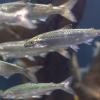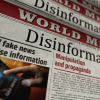NordForsk’s role is to create added value for the Nordic community and for the individual Nordic countries. In this way, NordForsk differs from the national, Nordic research councils. Therefore, NordForsk has now funded a research project to look more closely at how the concept of Nordic added value should be used in Nordic research, and how it is perceived by researchers and other recipients.
Tuire Liimatainen, a post-doctoral researcher at the University of Helsinki and a team member at the Nordic research centre ReNEW (Reimagining Norden in an Evolving World), has been assigned to conduct the project. ReNEW is a research centre established to strengthen collaboration and develop new expertise in research in the Nordic Region.
Nordic added value is a multifaceted concept
Tuire Liimatainen explains that Nordic added value seems to be a multifaceted concept with both ideological and practical dimensions, as it refers both to co-operation that is based on shared values, as well as to the benefits that are gained through working together when compared with activities that only take place on national level.

“NordForsk’s current definition of Nordic added value is very comprehensive and provides a good starting point for understanding different ways in which Nordic added value may be generated,” she explains and elaborates:
“However, by looking at the history of Nordic co-operation and Nordic research co-operation it’s also clear that this concept as well as other related concepts should be understood in relation to different needs, trends and challenges at various times. At the same time, I find it equally important to keep an open mind when conducting research and avoid making too many pre-assumptions.”
According to Liimatainen, the focus of the study will be on new empirical research that aims to bring together the perspectives of different stakeholders from project participants to national funding institutions.
In practice, this is done through data analysis, surveys and interviews. She will also look at both the past and present use of the concept in Nordic research co-operation, and contextualise it in relation to broader discussions regarding Nordic co-operation.
Furthermore, she will investigate both the theoretical and practical dimensions of the concept, but mostly the latter.
“This involves analysing how different stakeholders understand, define and value Nordic added value. This is important for identifying current trends but also for paving the way for identifying future trends”, says Liimatainen.
Director of NordForsk, Arne Flåøyen, is clear when it comes to the question of why this project is so important:
“NordForsk is a Nordic institution funded by public funds. Our purpose is to create Nordic added value through our work. By highlighting how NordForsk contributes to Nordic added value, we also demonstrate that taxpayers’ money is being spent on something important. The research will shed light on whether our current perception of ourselves is in line with the researchers’ and the outside world’s perception of us. It will do so by looking at how Nordic added value is mentioned and practiced in the development of calls, applications, evaluations, assessments made by programme committees, reports and so on,” Flåøyen explains.






